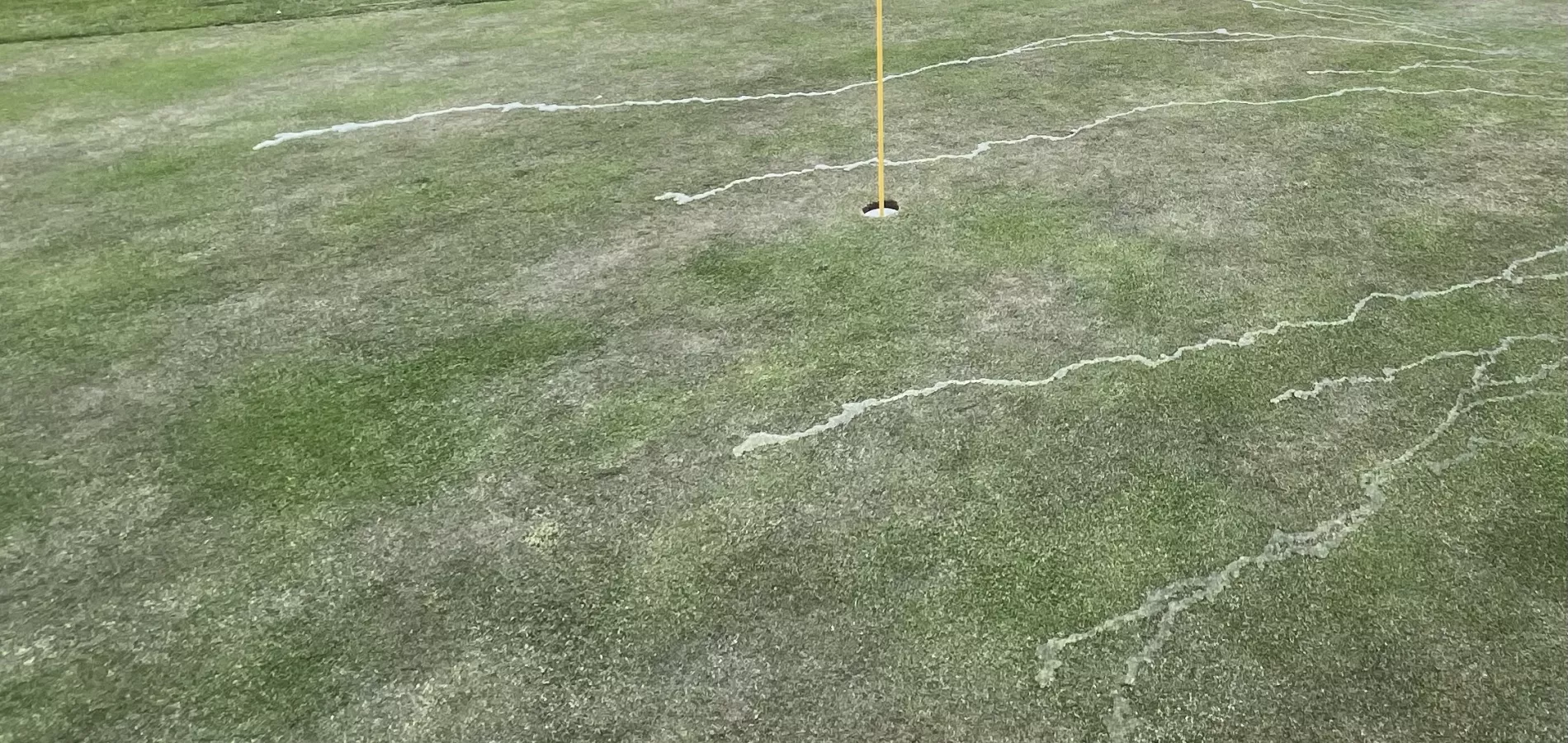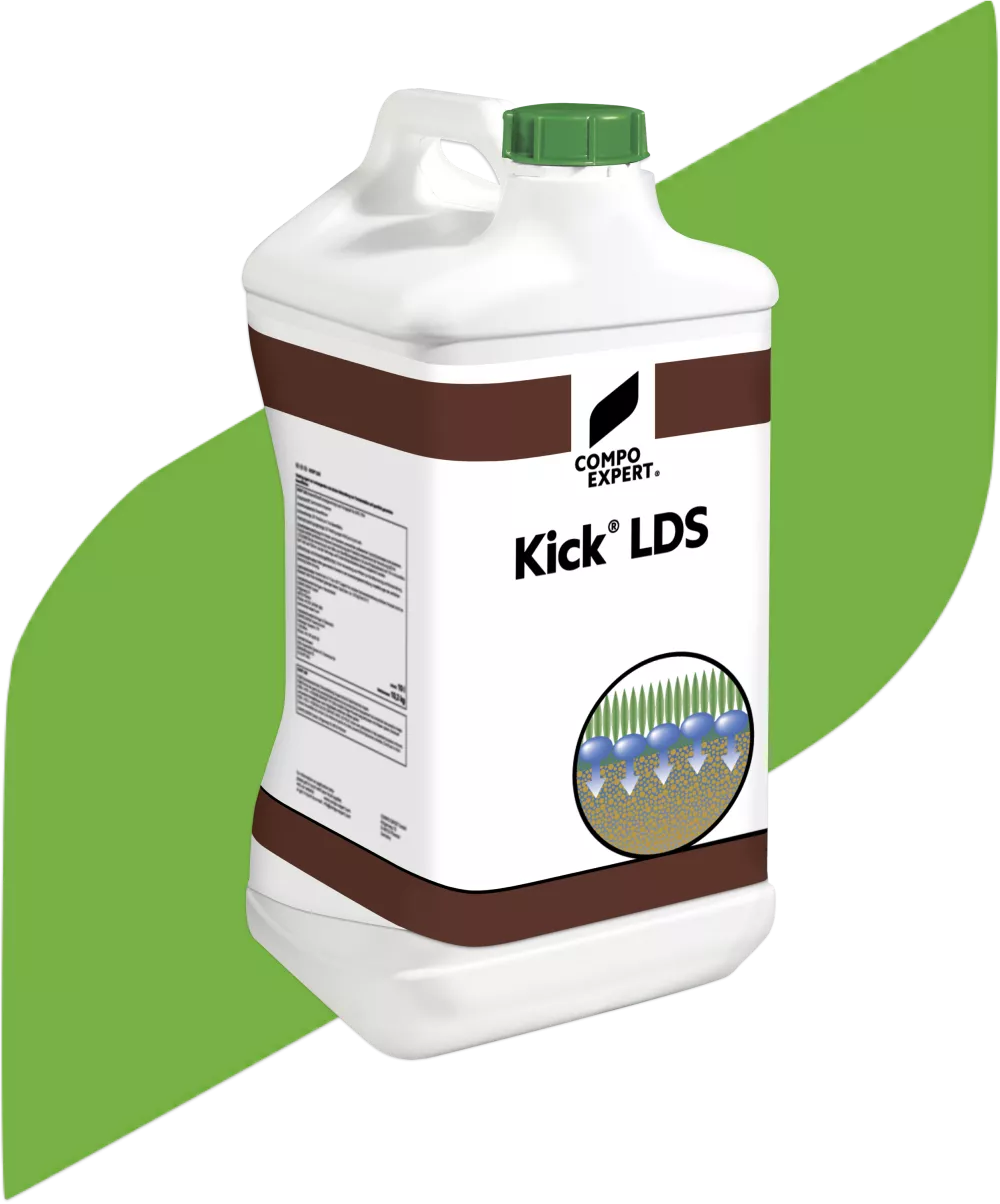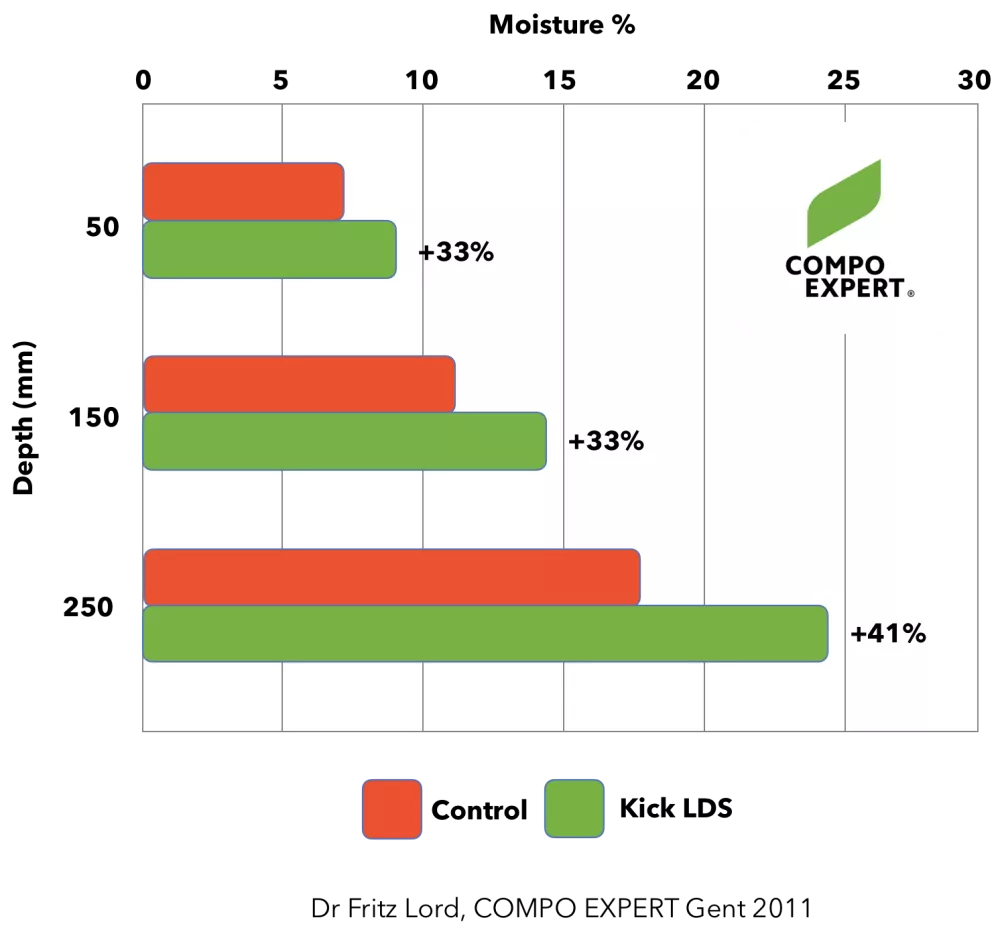
Kick® LDS
LDS - also known as localised dry patch
LDS (also known as localised dry patch) – is generally identified as an area of turf that dries out and becomes difficult to rewet even when copious amounts of water is applied.
It is regularly depicted by the presence of a water repelling from the soil profile (pooling and running off). The source of this water repellent soil has been linked to soil bacterial activity and also the breakdown of organic materials in the root zone as part of natural plant decomposition processes.
Drought stress
Drought stress (it differs from Dry Patch.) - this can be caused by there being no water repellent soil present, and the dryness can be a result of other turf related problems. For example, poor irrigation or poor root establishment and/or growth can have implications to the turf as they effect its ability to utilise the water which is made available.
It’s important to note that sometimes dry patches or spots are the results of fungi due to the residue it leaves on the thatch and soil.

Description
Description
Kick® LDS is a liquid wetting agent with high effectiveness against localised dry spots on sports turf especially on sand based green's, where dry spots can occur at higher temperatures and longer dry periods.
The individual grains of sand are broken down by organic degradation products, such as. B. cuticular waxes and exudates coated and thus water-repellent (hydrophobic). Meaning, irrigation water does not penetrate into such areas and flows off unused above ground.
The active ingredient in Kick® LDS attaches itself to the hydrophobic soil particles with its apolar ends. The polar, hydrophilic (water-attracting) ends, on the other hand, protrude outwards, which are coated with water and guide it into the dry areas. The effect occurs quickly and lasts over a longer period of time with repeated application.

Trials
Trials conducted Dr. Fritz Lord, COMPO EXPERT show an increased soil moisture content at each measured depth compared to control.
An extra 33% moisture content was achieved at both 50 and 150mm depth while an additional 41% moisture content was observed at even great depths of 250mm compared ton control.
This increased moisture within the soil profile helps reduce plant stress and therefore help to reduce the appearance of localised dry spots and drought stress.

Product information
Find out more about Kick® LDS and how it can fit into your program and be used to prevent and cure localised dry spot and drought stress.
